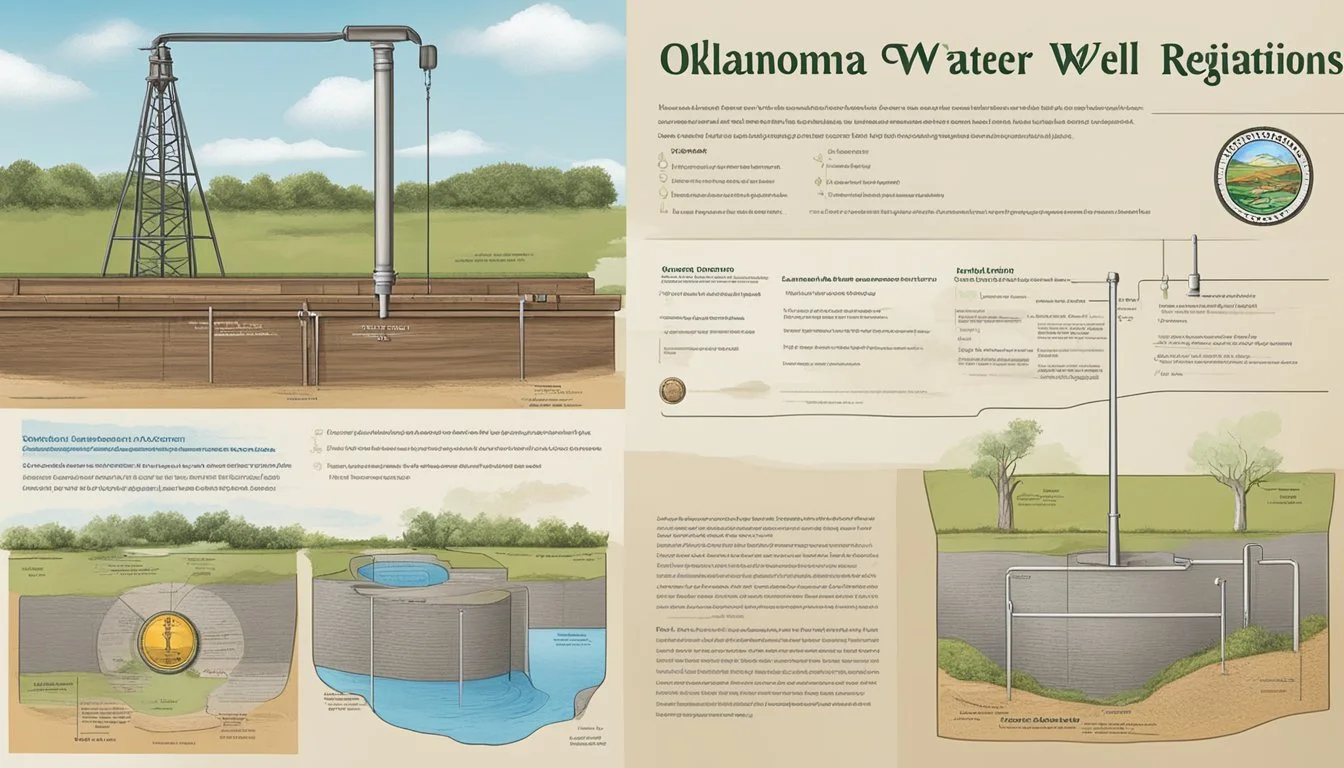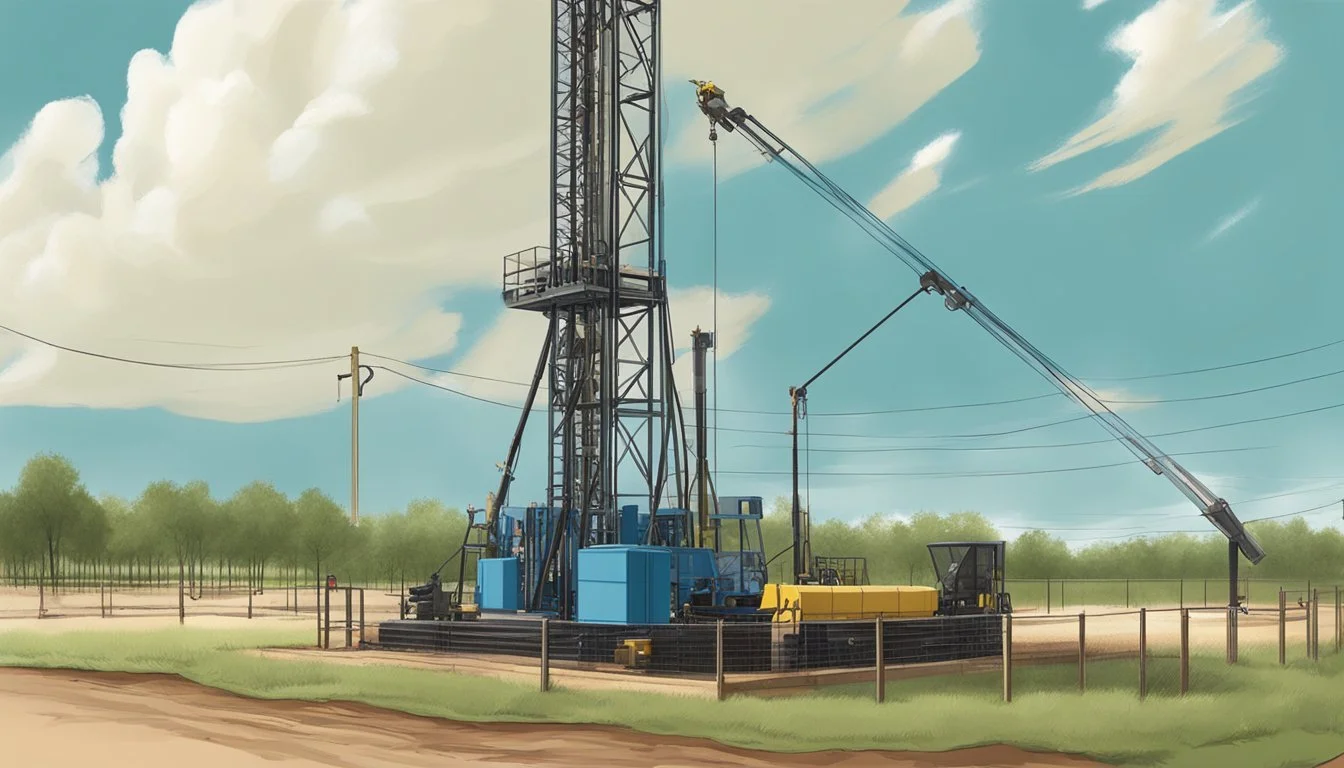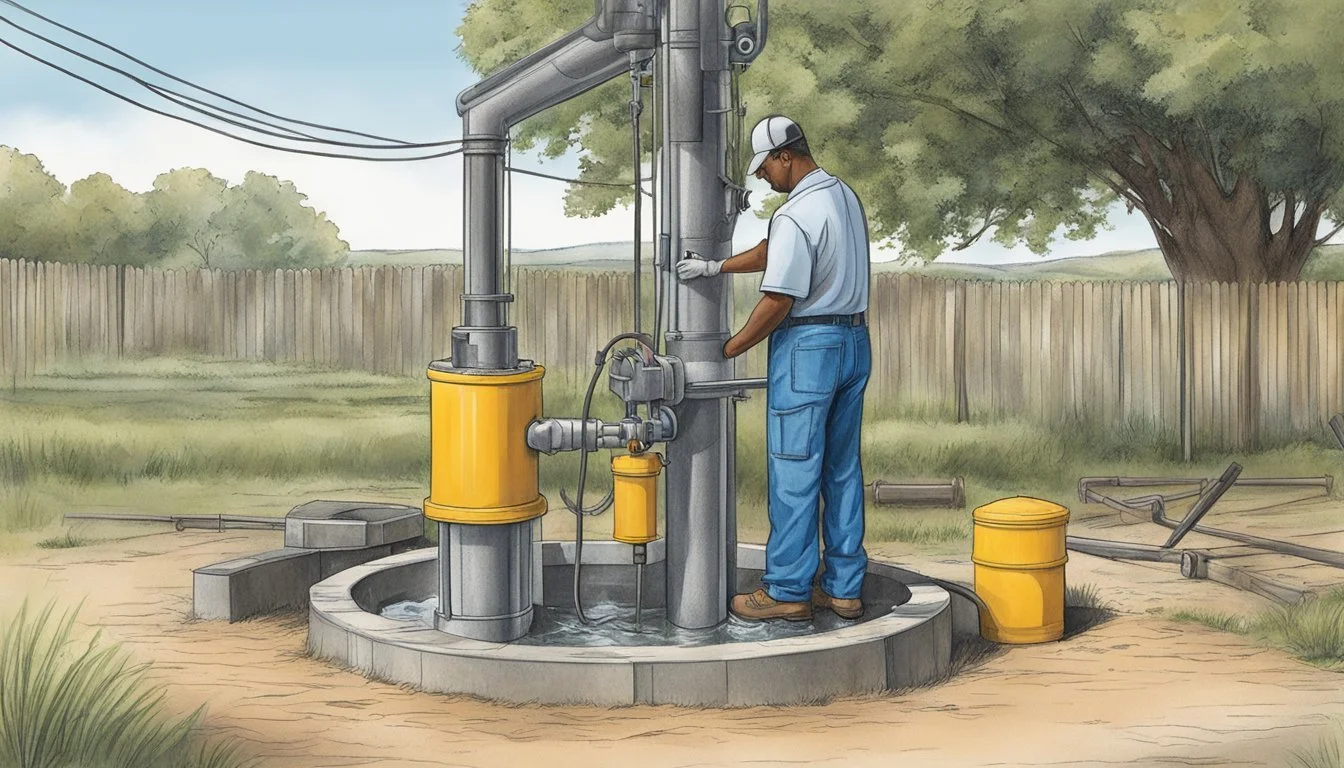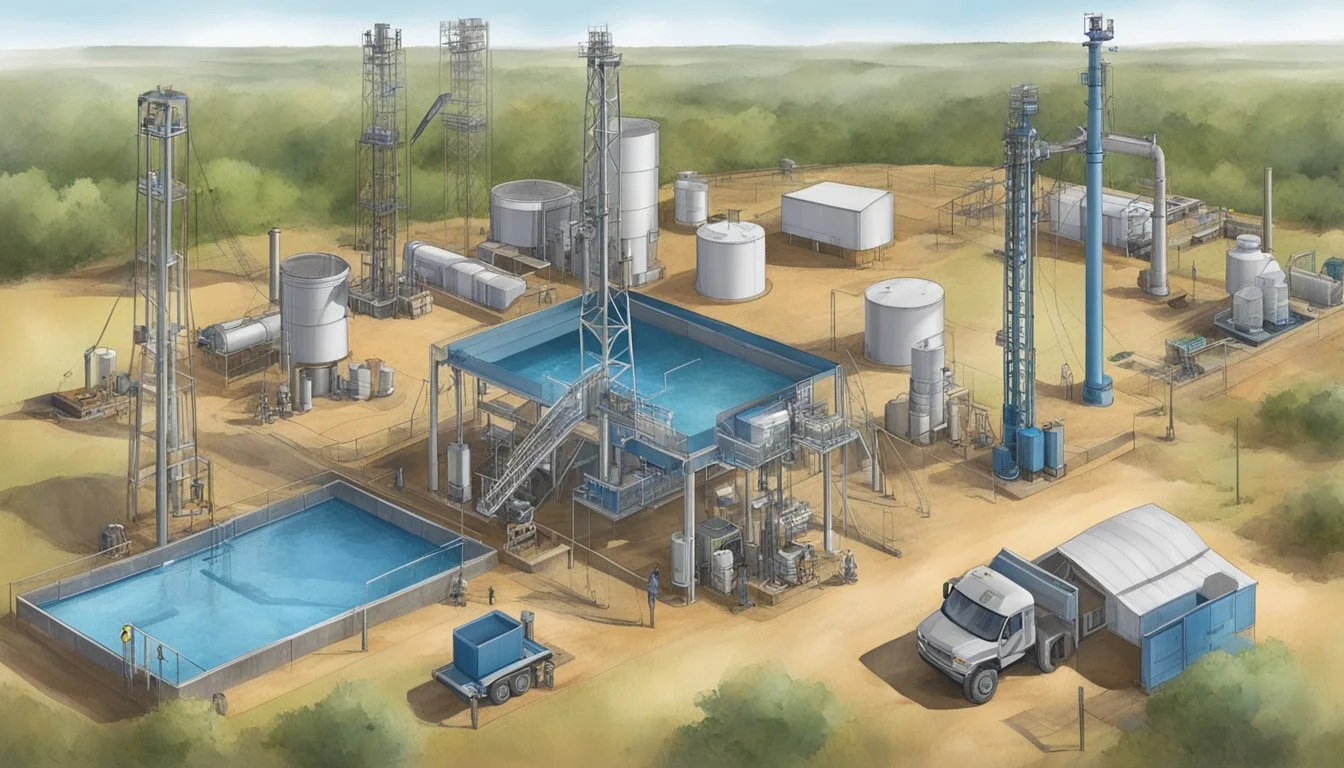Oklahoma Water Well Regulations
Understanding Compliance and Safety Standards
Regulating the use and management of water resources is a critical function for ensuring both public safety and environmental sustainability. In Oklahoma, a state where water is a valuable and sometimes scarce resource, the government has implemented specific standards and procedures to maintain the integrity of water wells. These regulations are designed not only to prevent the pollution of groundwater but also to safeguard the public by ensuring that well drilling and pump installation are conducted by licensed professionals.
The Oklahoma Water Resources Board (OWRB) is tasked with overseeing these regulations. Groundwater is a significant source of fresh water for the state, necessitating strict standards to preserve its quality for consumption, agriculture, and industry. The licensing of well drillers and pump installers is a preventative measure that reduces the risk of contamination and ensures that water wells are constructed and maintained according to recognized best practices.
Legal Framework for Water Well Regulations in Oklahoma
Water well regulations in Oklahoma are established to ensure the safe and sustainable management of the state's water resources. These regulations are developed and enforced by various entities, each one playing a critical role in preserving groundwater quality and public health.
Oklahoma Water Resources Board Authority
The Oklahoma Water Resources Board (OWRB) is the primary agency responsible for overseeing the use and management of water in the state. Under Title 785 of the Oklahoma Administrative Code, the OWRB is tasked with licensing well drillers and pump installers. This authority enables them to enforce standards on well construction, to prevent contamination of groundwater, and to protect the water wells' structural integrity.
Oklahoma Administrative Code and Water Standards
The Oklahoma Administrative Code provides a legal framework for water well regulations. It contains detailed provisions for well construction and maintenance to safeguard groundwater resources. The code elaborates on the necessary certifications for drillers and pump installers, and the procedures for reporting and monitoring water well activities to ensure compliance with state water standards.
Environmental Protection Agency (EPA) Involvement
While the OWRB primarily regulates water wells in Oklahoma, the Environmental Protection Agency (EPA) also plays a part in ensuring water quality. The EPA provides guidelines and standards that state regulations must align with, particularly concerning pollution control and reporting on environmental impacts. Compliance with EPA standards is critical for maintaining eligibility for federal funding and support in water resource management.
Water Well Construction and Design Standards
The robust regulations for Oklahoma's water well construction ensure the preservation of groundwater quality and public safety. Specific guidelines are in place for well construction requirements, the certification of well drillers, and standards for well casing and completion procedures.
Groundwater Well Requirements
In Oklahoma, groundwater wells must adhere to construction standards that ensure both the safety of the water supply and the longevity of the wells. Construction must ensure proper sealing to protect against contamination, and the use of durable materials is required for longevity. The Oklahoma Department of Environmental Quality (ODEQ) provides detailed regulations on these standards.
Well Driller Licensing and Certification
The state mandates that well drillers obtain a proper license, underscoring the need for skilled professionals in the drilling industry. To be certified, a well driller must demonstrate thorough knowledge of technical and legal aspects of well construction, which includes knowledge of groundwater hydrology and the regulations surrounding well drilling and plugging. Detailed licensing information is available with the Oklahoma Water Resources Board.
Well Casing and Completion Standards
Proper well casing is crucial to maintaining the integrity of water wells. Specifications for casings focus on materials, thickness, and installation procedures to create a secure barrier between the well and the surrounding soil and rock. Completion standards ensure that the well is safely constructed and functional. Standards for both casing and plugging are critical for preventing groundwater contamination and are comprehensively provided in Oklahoma's regulations, which are precise about the minimum standards for construction.
Well Drilling Operations
Well drilling operations in Oklahoma are stringently regulated to maintain the integrity of well construction and prevent groundwater pollution. Specific materials and methods are prescribed for cement and grout application, the use of bentonite in well construction, and the management of drill cuttings.
Cement and Grout Application
Cement grout is a critical component in sealing casing joints and preventing water contamination. The Oklahoma Water Resources Board mandates the use of cement grout to create an impermeable barrier that prevents pollutants from entering the water table. The grout must be applied in a manner that ensures proper sealing around the well casing, effectively protecting groundwater from potential contaminants.
Use of Bentonite in Well Construction
Bentonite, in forms such as bentonite pellets or high solids bentonite grout, is commonly used for its sealing and lubricating properties in well construction. Oklahoma regulations specify that bentonite grout can be utilized to seal off water-bearing formations, and when it comes to well construction, high solids bentonite grout is preferred for its low permeability and its ability to prevent the migration of pollutants.
Management of Drill Cuttings and Pollution Prevention
The management of drill cuttings is crucial in mitigating pollution sources during well drilling. In Oklahoma, drill cuttings must be managed in a way that they do not become a pollution source themselves. Preventative measures are set in place to handle the cuttings and minimize their impact on the surrounding environment, thus ensuring the protection of Oklahoma's groundwater from potential pollution.
Oklahoma Water Resources Board licenses well drilling and pump installation professionals and imposes comprehensive standards developed in cooperation with the Well Driller & Pump Installer Advisory Council.
Groundwater Protection Measures
Oklahoma's groundwater protection measures are designed to maintain high water quality standards, safeguard the ecosystem, and protect public health. They encompass regulations for preventing contamination, monitoring freshwater supplies, and managing waste.
Water Quality and Contamination Control
To prevent contamination of groundwater, the Oklahoma Water Resources Board enforces strict water quality standards. These regulations mitigate risks by controlling pollutants before they can infiltrate water supplies. Specifically, the board outlines permissible levels of various substances and the procedures for addressing violations.
Fresh Water Observation Wells and Test Holes
Observation wells and test holes are critical for monitoring groundwater levels and quality. As defined in regulatory documents, freshwater refers to water containing less than 5,000 parts per million total dissolved solids. Any constructed excavation, such as those drilled, washed, or driven for accessing freshwater, must adhere to stringent guidelines to ensure they do not compromise the water quality or the geological formation's integrity.
Septic System and Wastewater Lagoon Regulations
For onsite waste management systems like septic and wastewater lagoons, the state has implemented specific regulations to protect groundwater. These systems must be carefully designed, located, and maintained to prevent the leaching of contaminants. The Oklahoma Water Resources Board's regulations stipulate the standards for construction and operation to minimize the potential for groundwater pollution.
Through these regulations and monitoring programs, Oklahoma works to maintain the purity of its groundwater resources, thereby ensuring a safe and sustainable water supply for its residents.
Water Well Testing and Maintenance
Ensuring the safety and quality of groundwater necessitates rigorous water well testing and maintenance standards. Regular inspections and appropriate management of potential pollutants are crucial to uphold these standards.
Testing Standards for Groundwater Wells
Testing groundwater wells is essential to confirm that they meet safe drinking water criteria. In Oklahoma, well drillers and pump installers are licensed by the Oklahoma Water Resources Board (Wells & Licensing - Oklahoma.gov) to ensure well construction integrity and prevent groundwater pollution. These licensed professionals should perform routine testing for contaminants such as nitrates, bacteria, and other hazardous substances. It is recommended that homeowners carry out these tests annually or if any changes in water taste, odor, or appearance are noted.
Well and Septic System Inspections
Inspecting wells and septic systems regularly helps identify issues before they become significant health risks. The PDF Private Water Well Analysis by Oklahoma's Department of Environmental Quality underlines that, while not government regulated, private well owners are responsible for ensuring their water quality. Inspections should assess the structural condition of the well, the functionality of the septic system, and the presence of any nearby sources of contamination.
Pollution Source Identification and Management
Pollution prevention starts with identifying potential sources of contamination. These can range from agricultural run-offs to industrial spills. Once identified, effective management strategies, such as creating buffer zones or improving waste disposal practices, can be implemented. The Oklahoma Water Resources Board provides guidance and regulations on the construction of groundwater test holes, which are instrumental in monitoring and assessing the health of groundwater reserves. Controlled management of these potential sources is critical to preserving the quality of the state's groundwater.
Licensing, Fees, and Operator Certification
In Oklahoma, strict regulations oversee well drilling, compliance with environmental standards, and the certification of operators. Licensing is mandatory for professionals, and various fees are associated with the certification and renewal processes. Training programs ensure operators are equipped with the required expertise.
Well Drilling and Operator License Requirements
Well driller and pump installer professionals in Oklahoma must obtain licenses through the Oklahoma Water Resources Board (OWRB). This ensures well integrity and protects groundwater from pollution. The OWRB requires verification that the well owner has a water permit before non-domestic drilling can commence. For domestic drilling, an Intent-to-Drill Application must be submitted and approved.
DEQ and OWRB Fee Structures
The Oklahoma Department of Environmental Quality (DEQ) has a clear fee structure for operator certification. A temporary application comes with a fee of $62, while a non-certified helper can apply for a lower fee of $23. Renewal fees are set at $46, and these fees contribute to the maintenance and regulation of Oklahoma's water quality standards.
Professional Training and Certification Programs
The DEQ provides comprehensive training and certification programs for operators to ensure they meet Oklahoma's environmental and quality standards. Successful completion of these programs results in a certified status, which must be maintained through continued education and periodic renewal. These programs are crucial for maintaining the DEQ's high standards for water quality management.
Technological Tools and Innovations
The landscape of Oklahoma's water well regulations is increasingly shaped by technological advancements, which aim to enhance water management, well construction, and environmental protection.
Geographic Information Systems (GIS) for Water Management
The adoption of Geographic Information Systems (GIS) has revolutionized water management in Oklahoma. These systems enable regulators and professionals to spatially analyze hydrological data, manage water resources, and track well locations with precision. GIS technology can pinpoint areas that require specific types of cement grout in well sealing, ensuring compliance with state regulations.
Well Design Innovations and Modifications
Innovations in well design include the use of pitless adapters, a modification that allows water to be directed from the well to the plumbing system without any above-ground piping. This technology provides freeze protection and ensures that the wellhead is sealed from contaminants. The Oklahoma Water Resources Board's regulations on well construction and pump installation incorporate such advancements to maintain the quality and safety of groundwater.
Emerging Technologies in Well Plugging
The state of Oklahoma recognizes the importance of proper well plugging to prevent contamination of aquifers. With emerging technologies, environmentally sound methods are being adopted that involve precise calculations to determine the correct volume of cement grout needed for effective plugging. These technological advancements help in meeting the stringent standards set for protecting groundwater resources.
Frequently Asked Questions
Oklahoma water well regulations encompass a range of topics from permitting and records to drilling costs and water rights. The information provided addresses common inquiries regarding these aspects to ensure compliance with regulatory standards.
What are the requirements for obtaining a water well drilling permit in Oklahoma?
Individuals seeking to drill a water well in Oklahoma must obtain a water well drilling permit from the Oklahoma Water Resources Board (OWRB). Requirements include submitting an application, the proposed well’s location, purpose, and anticipated water use.
What is the minimum depth for water wells in Oklahoma, and how is it determined?
The minimum depth for water wells in Oklahoma is determined by various factors including the geological characteristics of the region and the depth to groundwater. Drillers must adhere to guidelines that account for these factors to prevent contamination and ensure sustainable water use.
How can I access the Oklahoma water well records or database?
Information on Oklahoma's water wells can be accessed through the OWRB's online water well records database. The database provides drillers' reports, well logs, and hydrologic data which are crucial for research and planning.
What are the latest changes to Oklahoma water well regulations?
Recent modifications to water well regulations in Oklahoma can be found through official OWRB communications. Staying informed on the latest changes is important for compliance and well management.
How is the cost of drilling a water well in Oklahoma estimated?
The cost of drilling a water well in Oklahoma varies based on factors such as location, depth, and materials required. Professionals typically provide estimates based on these specifics to account for the comprehensive costs involved.
What does Oklahoma groundwater law say about water rights and well ownership?
Oklahoma groundwater law specifies that landowners have rights to use groundwater for reasonable purposes related to their land. Well ownership and the use of groundwater are subject to regulatory stipulations to ensure that the resources are wisely managed and legally shared among users.









